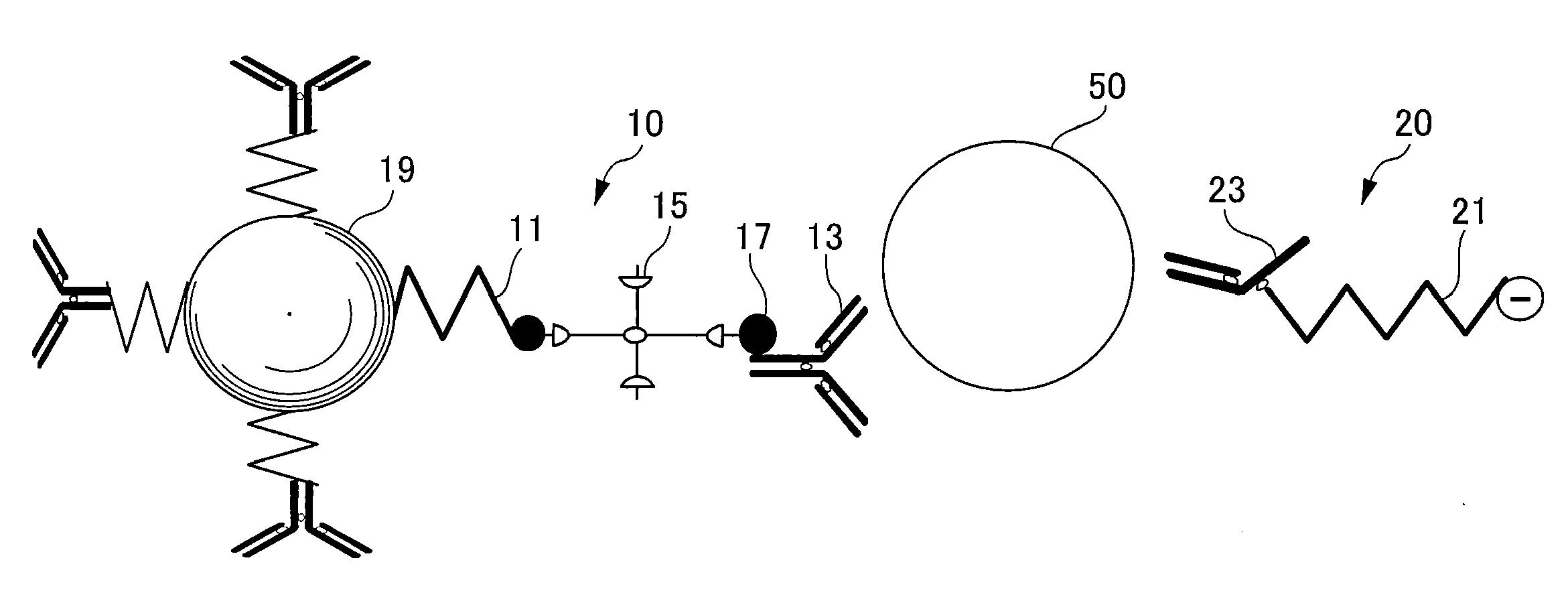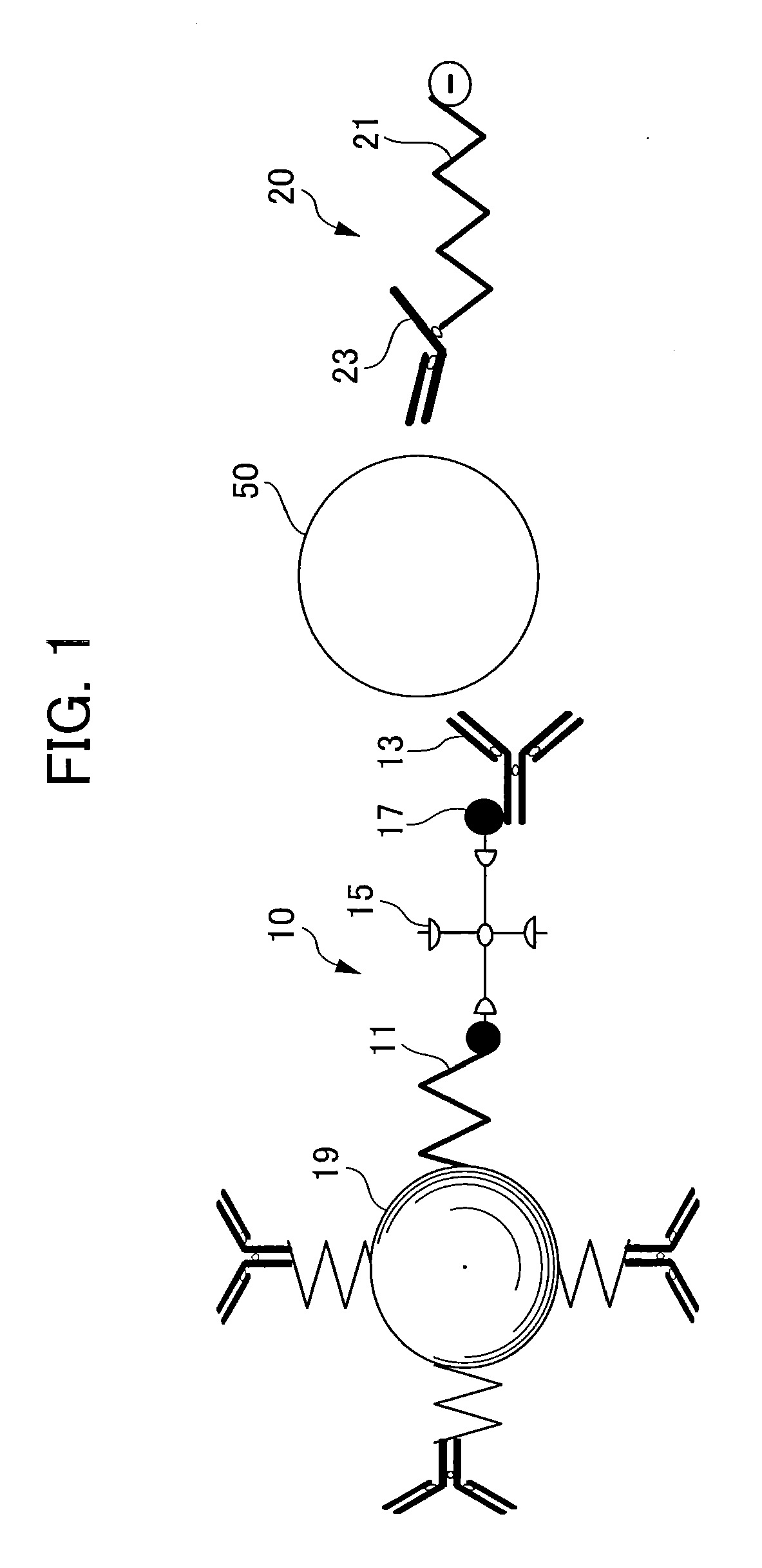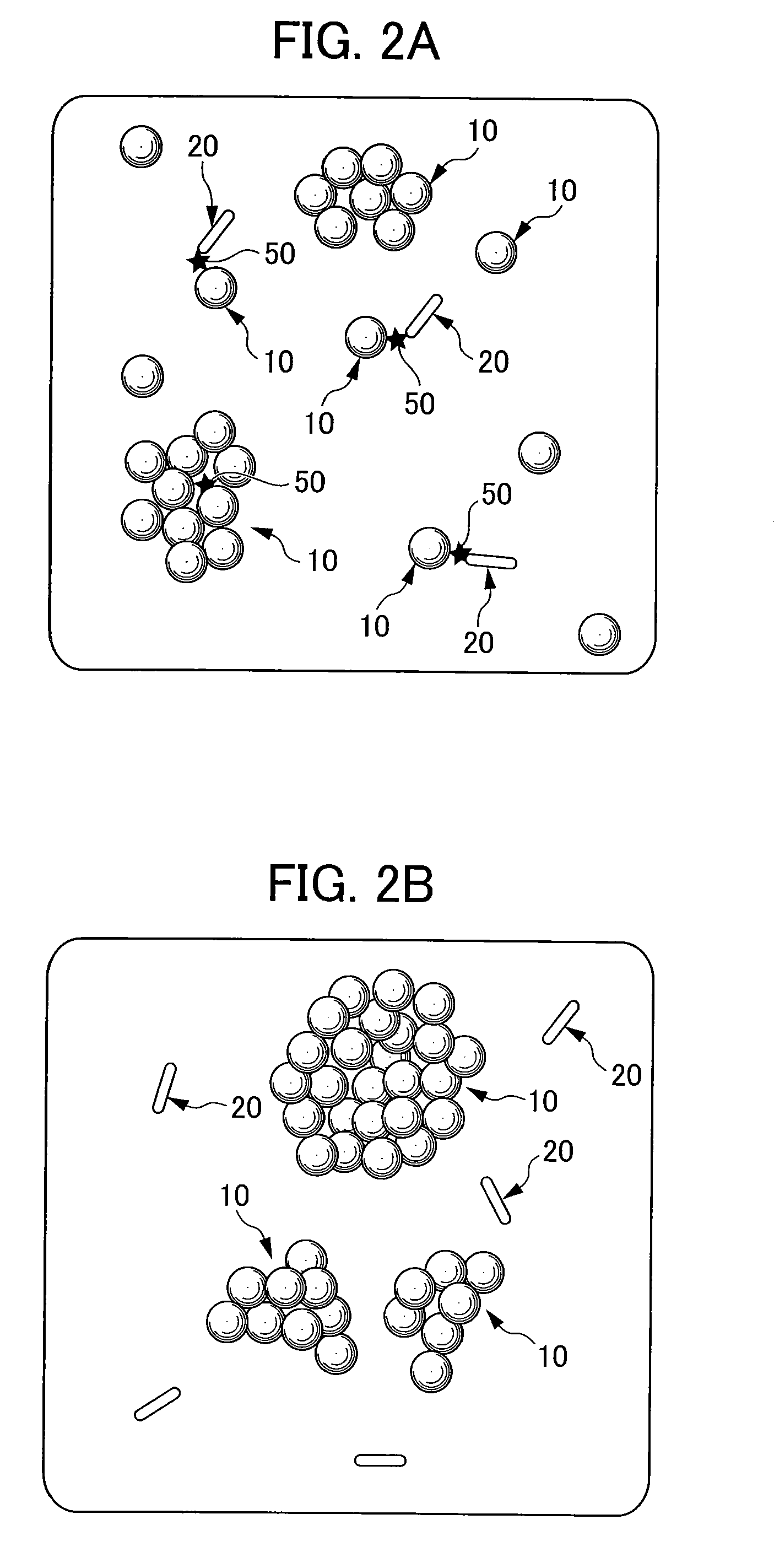Kit for detection/quantification of analyte, and method for detection/quantification of analyte
a technology for detecting/quantifying kits and analytes, applied in the field of kits for detecting/quantifying analytes, can solve the problems of insufficient amount of latex, difficult to detect a small amount of antigen, etc., and achieve the effect of rapid detection
- Summary
- Abstract
- Description
- Claims
- Application Information
AI Technical Summary
Benefits of technology
Problems solved by technology
Method used
Image
Examples
example 1
Preparation of Kit
Preparation of First Bound Substance
[0102]To begin with, an antibody (clone: M195, mouse IgG, produced by Leinco Technology, Inc.) which is the first affinity substance for the human thyroid stimulating hormone (TSH) which is a detection target, was biotinylated by a conventional well-known sulfo-NHS-Biotin method (by Asahi Techno Glass Corporation), and biotinylated anti-TSH beta antibody was prepared.
[0103]On the other hand, 250 microliters of Therma-Max LSA Streptavidin (by Magnabeat Corporation, 0.4 mass %), which is a streptavidin-bound particulate magnetic material, was placed into a 1.5 mL microtube. Then, the microtube was heated up to 42° C. to aggregate Therma-Max LSA Streptavidin. The aggregated substance was collected using a magnet, and the supernatant was removed. 250 microliters of another TBS buffer (20 mM Tris-HCl, 150 mM NaCl, pH 7.5) was added. The tube was cooled to disperse the aggregated substance. 50 microliters of the biotinylated anti-TSH b...
example 2
[0117]The turbidity of a sample with no TSH was measured in a similar way to the Example 1, except that a neodymium permanent magnet 73 (manufactured by Seiko Sangyo Co., Ltd.) was not attached outside the optical path of the semi-microcell 71 for the spectrophotometer. The result is shown in FIG. 9, with the turbidity of the sample with no TSH in the Example 1.
[0118]As shown in FIG. 9, the turbidity in the Examples 1 and 2 were approximately equal until about 600 seconds, and after 600 seconds, the turbidity in the Example 2 was saturated. The results suggest that, even without applying magnetic force, high sensitive detection or quantification is possible to a certain extent; however, to conduct more sensitive detection or quantification, a magnetic force should be applied and the difference between the measured value at approximately 600 seconds and the measured value at a later point of time should be used.
example 3
Synthesis of Biotin-Containing Poly(N-isopropyl acrylamide))
[0123]In a 200 mL three-neck flask to which a nitrogen gas introduction tube, a thermometer, and a stirrer were provided, 13.6 g of N-isopropyl acrylamide, 0.42 g of biotin monomer [N-biotinyl-N'-methacroyl trimethylene amide] and 0.2 g of 2-aminoethanethiol (manufactured by Wako Pure Chemical Industries, Ltd.) and 0.2 g of azobisisobutyronitrile were dissolved in 100 mL of methyl alcohol and were nitrogen-substituted for 30 minutes. Then, the polymerization reaction was performed at 70° C. for seven hours. The resulting reaction mixture was vacuum concentrated, and the resulting solid was dissolved in acetone, then reprecipitated with diethyl ether. A white precipitate was filtered, and then dried in a vacuum dryer overnight resulting 11.84 g of biotin-containing poly (N-isopropyl acrylamide). The molecular weight of the resulting biotin-containing poly (N-isopropyl acrylamide) was approximately 29,000 (Shodex GPC LF-804, ...
PUM
| Property | Measurement | Unit |
|---|---|---|
| mean particle size | aaaaa | aaaaa |
| mean particle size | aaaaa | aaaaa |
| mean particle size | aaaaa | aaaaa |
Abstract
Description
Claims
Application Information
 Login to View More
Login to View More - R&D
- Intellectual Property
- Life Sciences
- Materials
- Tech Scout
- Unparalleled Data Quality
- Higher Quality Content
- 60% Fewer Hallucinations
Browse by: Latest US Patents, China's latest patents, Technical Efficacy Thesaurus, Application Domain, Technology Topic, Popular Technical Reports.
© 2025 PatSnap. All rights reserved.Legal|Privacy policy|Modern Slavery Act Transparency Statement|Sitemap|About US| Contact US: help@patsnap.com



